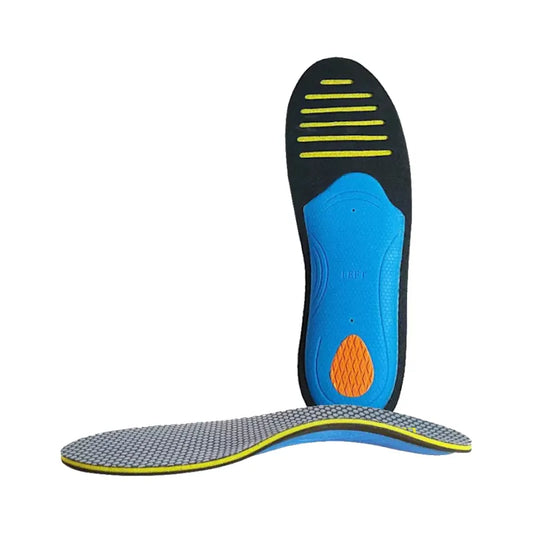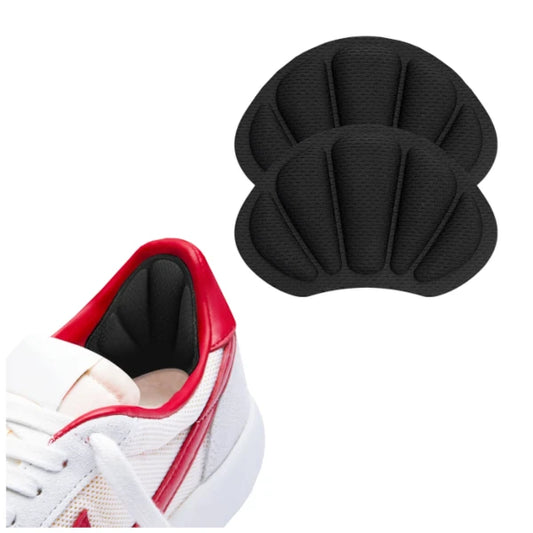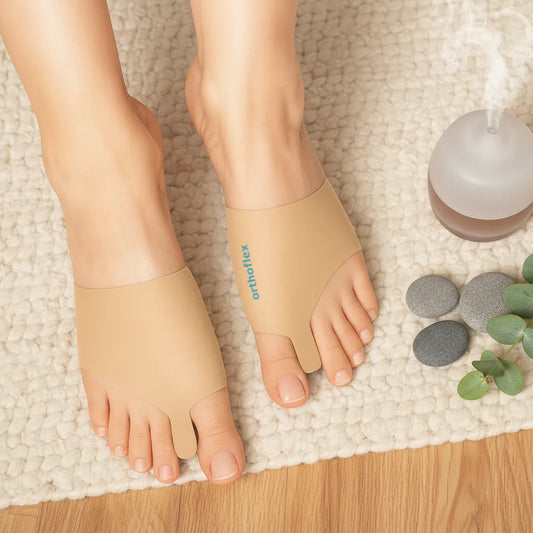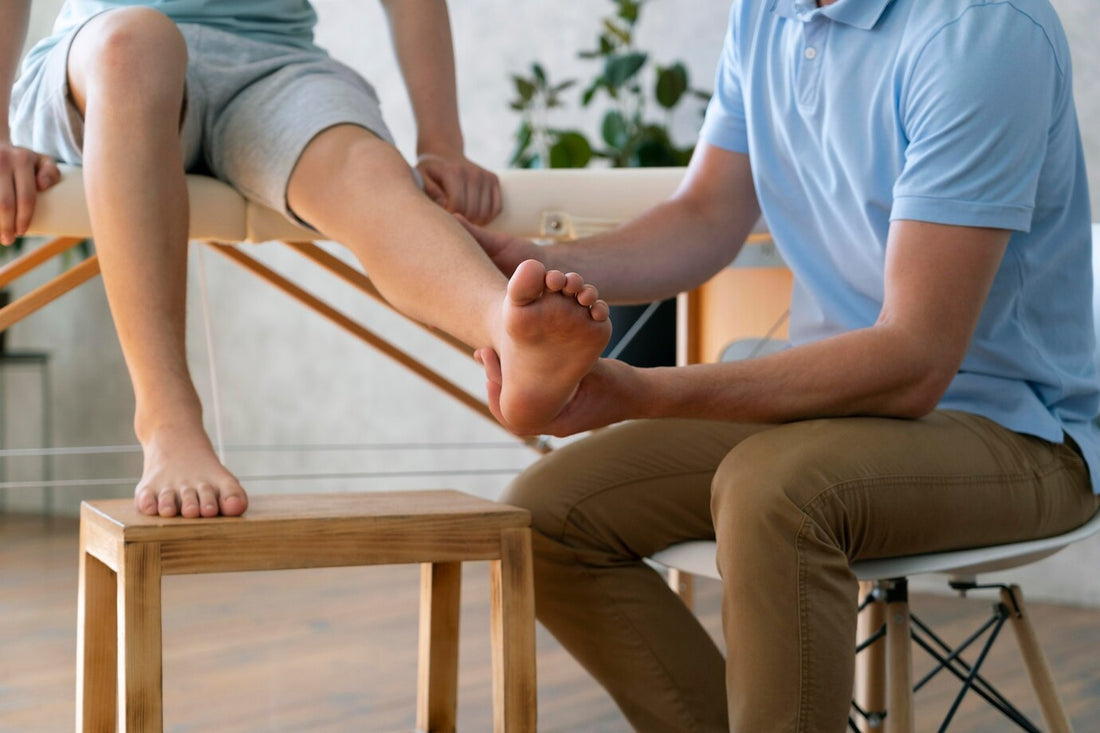
Living with Plantar Fasciitis: Coping Strategies and Lifestyle Adjustments
Share
Did you know that approximately 10% of people will experience plantar fasciitis at some point in their lives? That's a staggering statistic considering the impact this condition can have on daily activities and overall quality of life. Plantar fasciitis, characterized by chronic pain in the heel or arch of the foot, can make even simple tasks like walking or standing unbearable. We'll also delve into coping strategies and lifestyle adjustments that can help manage this condition effectively.
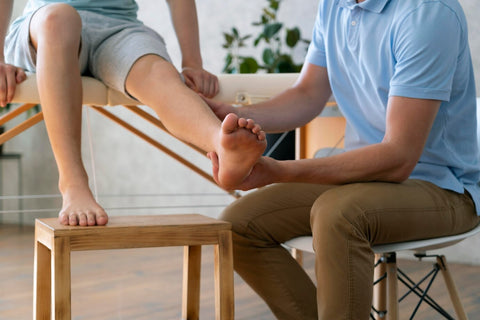
Coping Strategies for Managing Plantar Fasciitis Pain
Utilizing Over-the-Counter Pain Relievers
When dealing with plantar fasciitis pain, one effective coping strategy is to use over-the-counter pain relievers. These medications can help alleviate discomfort and reduce inflammation in the affected area. Options such as ibuprofen or acetaminophen can provide temporary relief and make it easier to carry out daily activities without constant pain.
Incorporating Regular Stretching Exercises
Regular stretching exercises are vital for managing plantar fasciitis pain. By incorporating specific stretches that target the plantar fascia and Achilles tendon, you can improve flexibility, reduce tension, and alleviate symptoms. Simple exercises like calf stretches or towel curls can be done at home or even during breaks at work to provide relief.
Applying Ice Packs or Using Cold Therapy
Another effective coping strategy is applying ice packs or using cold therapy on the affected area. Cold therapy helps reduce inflammation and numbs the area, providing temporary pain relief. Applying an ice pack for 15-20 minutes several times a day can significantly reduce discomfort and swelling associated with plantar fasciitis.

Exploring Alternative Therapies
For individuals seeking alternative approaches to manage their plantar fasciitis pain, exploring therapies like acupuncture or massage could be beneficial. These treatments focus on promoting relaxation, reducing muscle tension, and improving blood flow to the affected area. Many people find these alternative therapies helpful in alleviating chronic heel pain.
Incorporating these coping strategies into your daily routine can greatly assist in managing plantar fasciitis pain effectively. Whether it's utilizing over-the-counter pain relievers, regular stretching exercises, applying ice packs, or exploring alternative therapies like acupuncture or massage - finding what works best for you is key.
Lifestyle Adjustments to Reduce Plantar Fasciitis Symptoms
Living with plantar fasciitis can be challenging, but there are lifestyle adjustments you can make to help alleviate the pain and discomfort. By implementing these changes, you can reduce the strain on your feet and improve your overall quality of life.
Avoid High Impact Activities
To protect your feet from further damage, it's important to avoid high impact activities that put excessive strain on the plantar fascia. Activities like running or jumping can exacerbate symptoms and prolong the healing process. Instead, opt for low impact exercises such as swimming or cycling to maintain your fitness levels without worsening the condition.
Practice Proper Posture and Body Mechanics
Maintaining proper posture and body mechanics during daily activities is crucial for reducing stress on the feet. Be mindful of how you stand, walk, and sit to minimize pressure on the affected area. Distributing weight evenly across both feet and avoiding prolonged periods of standing or walking can help alleviate discomfort.
Supportive Footwear and Orthotic Inserts
Investing in supportive footwear is essential for managing plantar fasciitis. Look for shoes with good arch support, cushioning, and a firm heel counter to provide stability and shock absorption. Using orthotic inserts or custom-made shoe inserts can help distribute pressure evenly throughout the foot while providing additional support.
By making these lifestyle adjustments, you can effectively manage plantar fasciitis symptoms and prevent further aggravation. Remember that everyone's experience with this condition is unique, so finding what works best for you may require some trial and error.
Home Remedies for Plantar Fasciitis Relief
If you're living with plantar fasciitis, there are several home remedies that can help alleviate the pain and discomfort. Here are some strategies you can try:
Self-Massage Techniques
One effective way to relieve plantar fasciitis pain is by performing self-massage techniques on the affected foot. You can use a tennis ball or foam roller to roll under your foot, applying pressure to the arch and heel area. This helps loosen tight muscles and promotes blood flow.
Night Splints
Night splints are devices worn while sleeping that stretch the plantar fascia and Achilles tendon. They help maintain a gentle stretch throughout the night, reducing morning pain and stiffness. By keeping your foot in a dorsiflexed position, night splints promote healing and prevent further strain on the plantar fascia.

Arch Support Taping Techniques
Another temporary relief option is using arch support taping techniques. By applying athletic tape to support your arch, you can reduce stress on the plantar fascia and experience less pain during activities. It's important to learn proper taping techniques from a healthcare professional to ensure effectiveness.
Elevating Your Feet
When resting or sleeping, elevating your feet can be beneficial in reducing swelling associated with plantar fasciitis. By propping up your feet above heart level, gravity helps drain excess fluid from the affected area, providing relief from inflammation.
Remember, these home remedies may provide temporary relief but may not cure plantar fasciitis completely. If symptoms persist or worsen, it's essential to consult a healthcare professional for further evaluation and treatment options.
Preventive Techniques for Avoiding Plantar Fasciitis
To prevent plantar fasciitis and reduce the risk of developing this painful condition, there are several strategies you can incorporate into your lifestyle. These preventive techniques can help keep your feet healthy and minimize the strain on the plantar fascia.
Gradually Increase Exercise Intensity and Duration
It's important to start slow and gradually increase intensity and duration over time. Sudden strain on the feet can put excessive stress on the plantar fascia, leading to inflammation and pain. By easing into your workouts and allowing your feet to adapt, you can reduce the risk of developing plantar fasciitis.
Wear Appropriate Footwear
Choosing the right footwear is crucial in preventing plantar fasciitis. Look for shoes that provide good arch support, cushioning, and shock absorption. Shoes with a firm heel counter and arch support can help distribute weight evenly across the foot, reducing strain on the plantar fascia. Consider using orthotic inserts or custom-made shoe inserts for added support.
Maintain a Healthy Weight
Excess weight puts additional pressure on your feet, increasing the risk of developing plantar fasciitis. By maintaining a healthy weight through regular exercise and a balanced diet, you can minimize stress on your feet and decrease the likelihood of experiencing foot pain.
Take Regular Breaks During Prolonged Standing or Walking
If you have a job that requires prolonged standing or walking, taking regular breaks is essential. Give your feet some rest by sitting down or elevating them whenever possible. This practice helps alleviate pressure on the plantar fascia and reduces fatigue in your feet.
By implementing these preventive techniques into your daily routine, you can significantly reduce the risk of developing plantar fasciitis. Remember to listen to your body's signals and take appropriate measures if you experience any discomfort or pain in your feet.
The Role of Weight Loss in Alleviating Plantar Fasciitis Pain
Excess weight can put increased pressure on the feet, exacerbating the symptoms of plantar fasciitis. When you carry extra pounds, it adds strain to the plantar fascia—the thick band of tissue that connects your heel bone to your toes. This excess pressure can lead to inflammation and micro-tears in the fascia, causing pain and discomfort.
Research has shown a correlation between weight loss and reduced plantar fasciitis symptoms. Losing weight helps reduce the burden on your feet, allowing the inflamed tissues to heal and alleviate pain. One study found that individuals who lost weight experienced a decrease in plantar fascia thickness and fat pad atrophy, leading to improved symptoms.

To manage body weight effectively, adopting a balanced diet is crucial. Focus on consuming nutrient-dense foods while limiting processed snacks and sugary beverages. Incorporate plenty of fruits, vegetables, lean proteins, whole grains, and healthy fats into your meals. This will provide essential nutrients for overall health while aiding in weight management.
Regular exercise is also essential for maintaining a healthy weight and managing plantar fasciitis pain. Engaging in low-impact activities like swimming or cycling can help burn calories without putting excessive strain on your feet. Exercises that strengthen the muscles around your feet and ankles—such as calf stretches or toe curls—can provide added support for the plantar fascia.
It's important to consult healthcare professionals for guidance on safe and effective weight loss strategies tailored to your specific needs. They can provide personalized recommendations based on factors such as current health condition, fitness level, and any underlying medical conditions.
Understanding the Importance of Proper Footwear and Orthotics
Key Features for Supportive Footwear
When living with plantar fasciitis, it's crucial to choose footwear that provides adequate support. Look for these key features when selecting shoes:
- Arch Support: Opt for shoes with built-in arch support to alleviate pressure on the plantar fascia.
- Cushioning: Adequate cushioning in the heel and forefoot can help absorb shock and reduce impact on the feet.
- Stability: Shoes with a firm heel counter and a wide base provide stability, reducing strain on the plantar fascia.
The Role of Orthotic Inserts
Orthotic inserts are an additional tool to consider when managing plantar fasciitis. These inserts can provide extra arch support and cushioning. Here's what you need to know:
- Off-the-Shelf Options: Over-the-counter orthotic inserts are readily available at pharmacies or shoe stores. They offer a cost-effective solution for mild cases of plantar fasciitis.
- Custom-Made Orthotics: For more severe cases, custom-made orthotics may be recommended by podiatrists or shoe specialists. These are specifically designed to suit your foot's unique shape and needs.
Consulting Professionals for Guidance
To ensure you're making the right choices regarding footwear and orthotics, it's beneficial to seek advice from professionals such as podiatrists or shoe specialists:
- Podiatrists: These experts specialize in foot health and can assess your condition, recommend suitable footwear options, and prescribe custom orthotics if necessary.
- Shoe Specialists: Visit specialized shoe stores where knowledgeable staff can guide you towards brands that prioritize comfort, support, and proper fit.
By understanding the importance of proper footwear and orthotics in managing plantar fasciitis, individuals can make informed choices that promote foot health and alleviate pain.
Living a Fulfilling Life with Plantar Fasciitis
Living with plantar fasciitis can be challenging, but it doesn't have to hold you back from living a fulfilling life. By implementing coping strategies, making lifestyle adjustments, and taking preventive measures, you can manage the pain and reduce the impact of this condition on your daily activities.
One of the key coping strategies for managing plantar fasciitis pain is to listen to your body. Pay attention to what triggers the pain and modify your activities accordingly. Incorporating low-impact exercises like swimming or cycling into your routine can help maintain fitness without putting excessive strain on your feet. Practicing self-care techniques such as stretching exercises and using ice packs can provide relief.
Making lifestyle adjustments is also crucial in reducing plantar fasciitis symptoms. This includes wearing proper footwear that provides adequate support and cushioning for your feet. Consider using orthotics or shoe inserts recommended by a healthcare professional to alleviate pressure on the affected area. Furthermore, maintaining a healthy weight through regular exercise and a balanced diet can significantly reduce the strain on your feet.
In conclusion, while living with plantar fasciitis may present challenges, there are various coping strategies and lifestyle adjustments that can help you manage the pain and continue leading a fulfilling life. By listening to your body, making necessary modifications, and seeking appropriate medical advice when needed, you can minimize the impact of this condition on your day-to-day activities.
FAQs about Living with Plantar Fasciitis:
How long does it take for plantar fasciitis to heal?
Plantar fasciitis healing time varies from person to person. With proper care and treatment, most individuals experience significant improvement within six months. However, some cases may require more extended periods for complete recovery.
Can I still exercise with plantar fasciitis?
Yes! While high-impact activities should be avoided or modified during flare-ups, low-impact exercises like swimming or cycling can help maintain fitness without exacerbating the condition. Consult with a healthcare professional to determine the most suitable exercise regimen for your specific situation.
Are there any natural remedies for plantar fasciitis?
While natural remedies may provide temporary relief, it's essential to consult with a healthcare professional for an accurate diagnosis and appropriate treatment plan. However, stretching exercises, applying ice packs, and massaging the affected area can offer some relief from plantar fasciitis symptoms.
Can weight loss help alleviate plantar fasciitis pain?
Yes! Excess weight puts additional strain on your feet, exacerbating plantar fasciitis pain. Losing weight through a combination of healthy eating and regular exercise can significantly reduce the pressure on your feet and alleviate discomfort.
Is surgery necessary to treat plantar fasciitis?
Surgery is typically considered as a last resort when conservative treatments fail to provide sufficient relief. The majority of plantar fasciitis cases respond well to non-surgical interventions such as physical therapy, orthotics, medication, and lifestyle modifications. It's crucial to consult with a healthcare professional who can guide you through the best course of action based on your individual circumstances.
Author Bio

Marlene Carvalho
Certified Sports Physiotherapist of Elite and Olympic athletes; Performance Coach to racing drivers
Marlene Carvalho is a sports physiotherapist passionate about all things sports.


